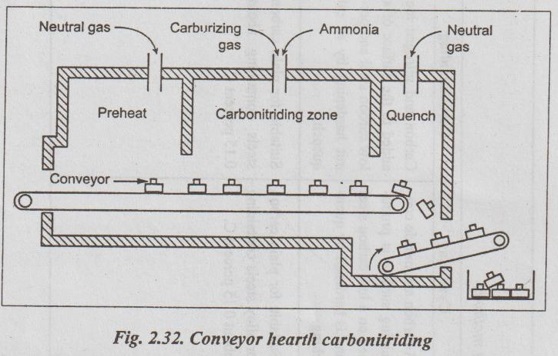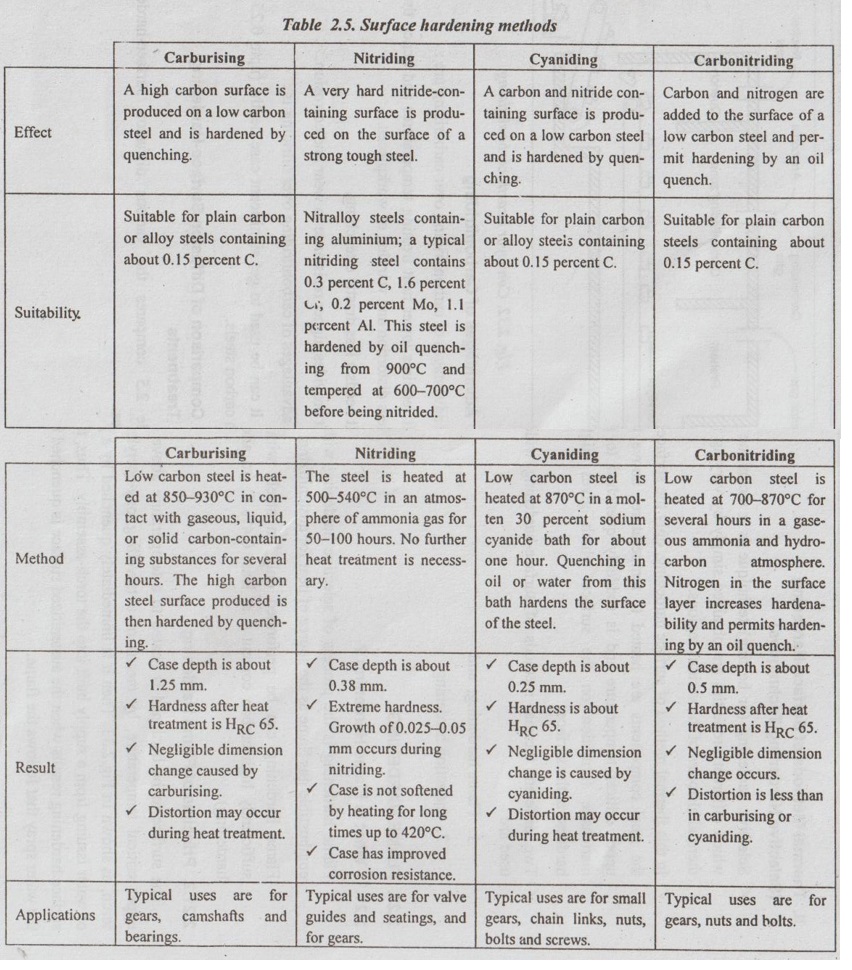As we know, in the carburising process the diffusing hardening element is carbon. In nitriding process, the diffusion involves nitrogen.
CARBONITRIDING
1. What is Carbonitriding?
✓ As we know, in the carburising process the diffusing hardening element is carbon. In nitriding process, the diffusion involves nitrogen. As the name suggests, carbonitriding is a surface- hardening process that involves the diffusion of both nitrogen and carbon into the steel surface.
✓ Carbonitriding is also known as gas-cyaniding or dry- cyaniding, because it makes use of a mixture of hydrocarbons pile and ammonia.
2. Suitability
(i) Carbonitriding is an ideal process for hardening small components where great resistance to wear is necessary.
(ii) The steels that are commonly carbonitrided are the low- carbon and low-carbon alloy steels.
3. Carbonitriding Process
The carbonitriding process is carried out in a gas-atmosphere furnace using a carburising gas such as propane or methane mixed with the ammonia. The organic gas serves as the source of carbon and the ammonia gas serves as the source of nitrogen.
The workpiece is heated to 850°C in the mixture of above gases for 2 - 10 hours. This is followed by quenching (to increase hardness), and then tempering (to reduce brittleness) is employed at 180°C. Now both carbon and nitrogen diffuse simultaneously, carbon diffuse at higher rate.
A typical carbonitriding system is illustrated in Fig.2.32.

4. Advantages of Carbonitriding
The advantages of carbonitriding over carburising are:
1. It requires lower heat treating temperatures and hence there is less distortion and warping of workpieces.
2. It needs a less drastic quenching.
3. It provides higher resistance to wear and corrosion.
The advantages of carbonitriding over nitriding is:
1. It can be used to get significant case depths (upto 0.25 mm) on plain carbon steels.
5. Comparison of Diffusion Surface-Hardening Treatments
Table 2.5 compares the various diffusion surface-hardening processes.

II. Thermal Methods of Surface-Hardening (Selective Hardening Techniques)
✓ Selective hardening (or heating) technique is a technique by which different properties are obtained simply by varying the thermal histories of the various regions.
✓ In this thermal method of surface hardening, only the surface of the steel components are heated to temperatures above the upper critical temperature and is suddenly quenched to get martensite formation on the surface which gives higher hardness at the surface.
✓ Two different thermal methods of surface-hardening widely used are:
1. Flame hardening, and
2. Induction hardening.
No comments:
Post a Comment